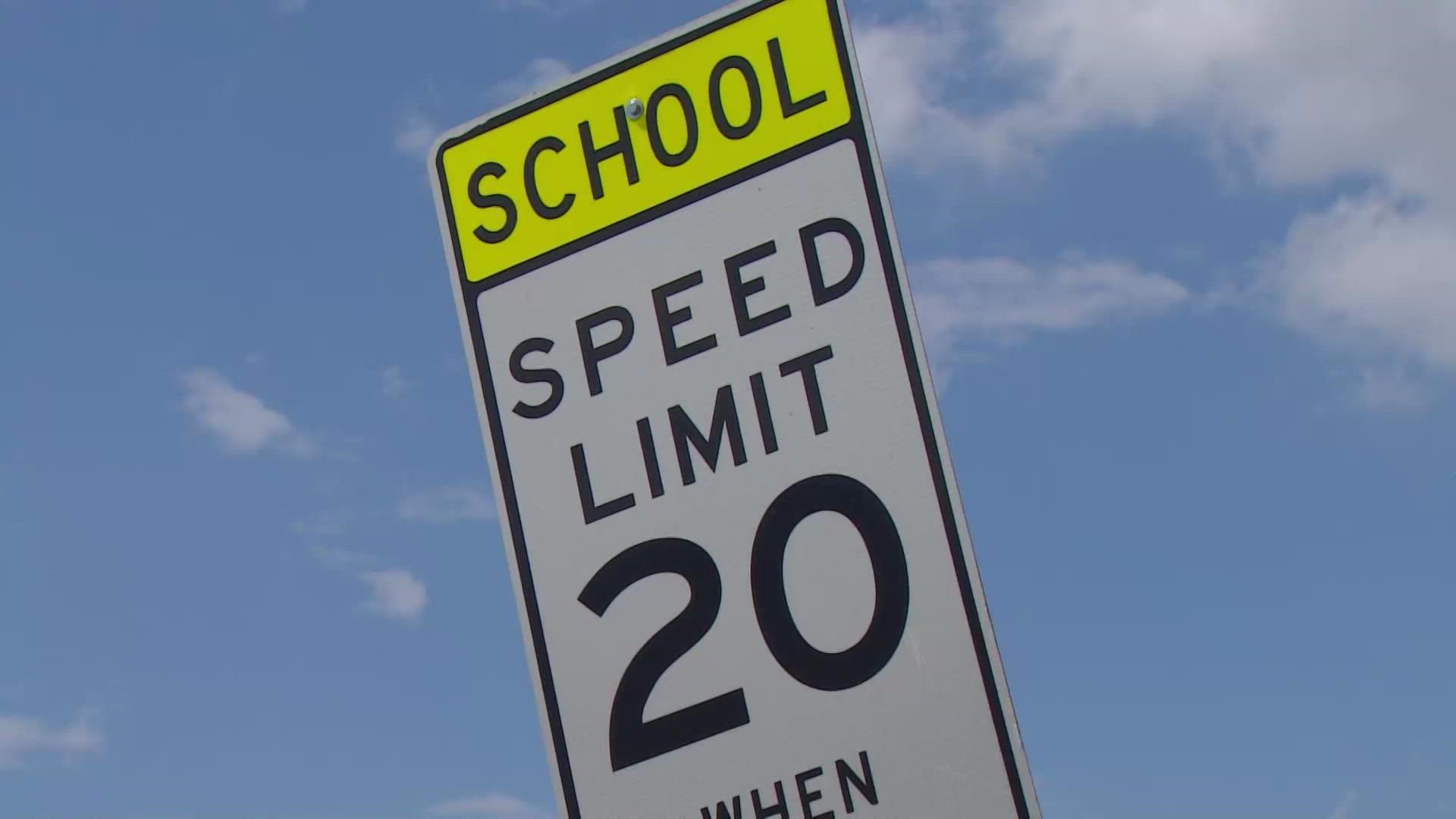DALLAS — We all know about the morning rush: You're running late, trying to get out the door, then racing down the road when you get stuck behind a school bus or find yourself in a school zone that seems to go on forever.
It can be tempting to speed through these areas, but following the rules can be the difference between life and death for a student or school staff member.
According to the National Highway Traffic Safety Administration, there are two main factors that go into your stopping distance when driving:
- Recognizing that a child has entered the roadway, which takes three-quarters of a second.
- Slamming on your brakes, which takes another three-quarters of a second.
So we're already 1.5 seconds in.
Now we can figure out the distance it will actually take your car to stop.
For example, if you're going the speed limit in a school zone, say 20 miles per hour, your car will stop in 63 feet. Your reaction time takes up 44 of those feet, and the remaining 19 feet is for braking distance.
Now let's say you're in a rush and you're going 30 mph in a school zone instead of 20 mph. You almost double the distance it will take to stop. Your car will stop in 119 feet, which is about half a football field.
If we bump up your speed to 40 mph – double our hypothetical school zone speed limit – it'll take you 164 feet to stop.
Keep in mind, all of these distances are assuming the roads were dry and you were paying attention behind the wheel. If you were trying to eat breakfast or deal with a child in the backseat or fiddling on your phone , your reaction time will go up.
Add in rain or a car that needs a tune up and these distances change too.
So, as you start to see more active school zones and kids on their way to a bus stop, remember seconds and speed count when it comes to saving lives.
As always, if you have a traffic concern in your area, you can email us here.

